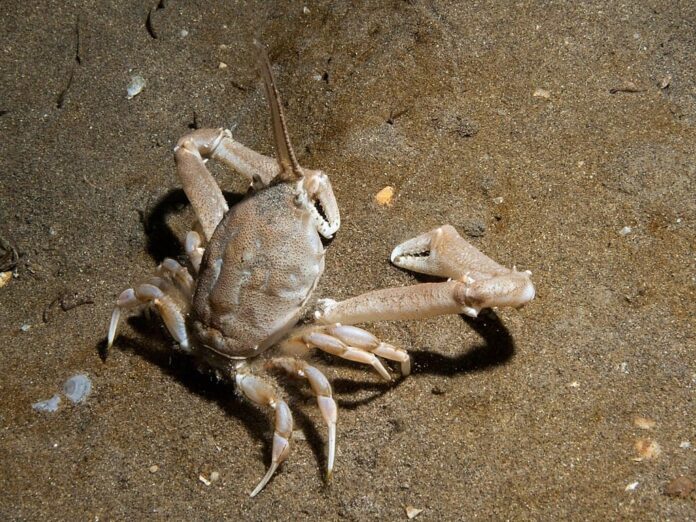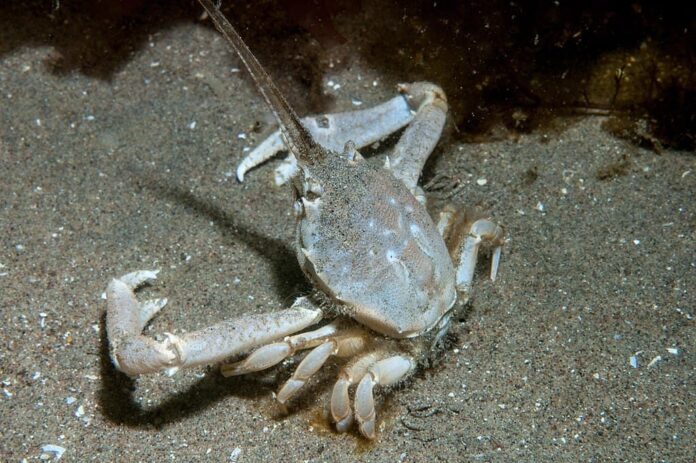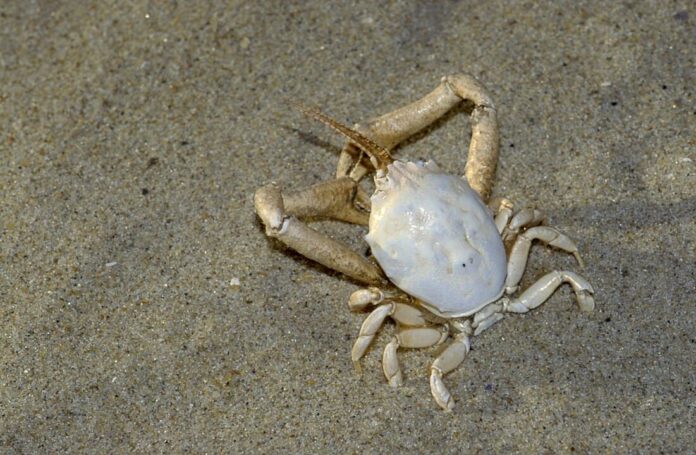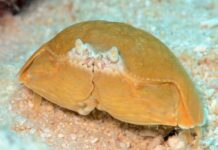A masked crab is not something that you come across every day, and this is why it is interesting. It also goes by the name helmet crab or sand crab as well because of how the way it looks. The most fascinating fact about this decapod is definitely its unique carapace, and we are going to the details below. Besides the look, there are also a few other things that the masked crabs have but others don’t. Let’s deep diver now, shall we?
1Appearance

A masked crab measures around 4 centimeters long, and its reddish-brown to yellow carapace is very unique-looking. If you look closely, you can see that its carapace has patterns and ridges that resemble a human face; hence the name. The crab has 2 teeth between its eyes, and the lateral margin has 4 teeth. It has two antennae that are brought together to form a breathing tube that allows it to breathe while hiding. These two antennae act like a snorkel by bringing oxygen-rich water while the crab is submerged in the sand. You can distinguish males from females by the length of the claws of the these crabs. Males have longer claws than the body while females’ claws are at around the length of their carapace.
2Feeding & Habitats

This burrowing crab is a resident of the North Atlantic and North Sea, all the way from Portugal to Norway. They are also found in the Mediterranean Sea, burying themselves in sandy substrates from lower shore and shallow sublittoral zones at around 100 meters. The elongated body of these elusive crabs allows them to quickly burrow into the sand to avoid predators and hunt. Across its range, this crab feeds on infaunal invertebrates such as bivalve mollusks and polychaete worms. Females of this species carry eggs for around 10 months, and they can reproduce repeatedly for several years.
Related Post: Poisonous Crabs You Don’t Know




